Pan Roasting Technique – the Chef’s Secret Cooking Technique
One of my favorite cooking techniques not talked about in most cookbooks
If I could teach you just one chef’s technique that will help you save time in the kitchen and deliver a thick cut of meat to the table with a perfect sear and juicy medium-rare throughout, it would be pan roasting.
This is, hands down, one of the best and most efficient cooking methods around. Pan roasting takes advantage of conductive heat from the stove plus radiant and convective heat in the oven to cook thicker cuts perfectly and in short order.
You won’t find this pan roasting technique in many cookbooks, but it is a technique taught in every culinary arts school and used by professional chefs daily.
Some chefs use this technique as part of their mise en place. They sear the meat during prep time, hold it in a low boy refrigerator and finish the cooking process to order in the oven. Even if the technique is used without any holding time, this cooking method saves time over straight oven roasting and is more practical than pan frying for thicker cuts of meat.
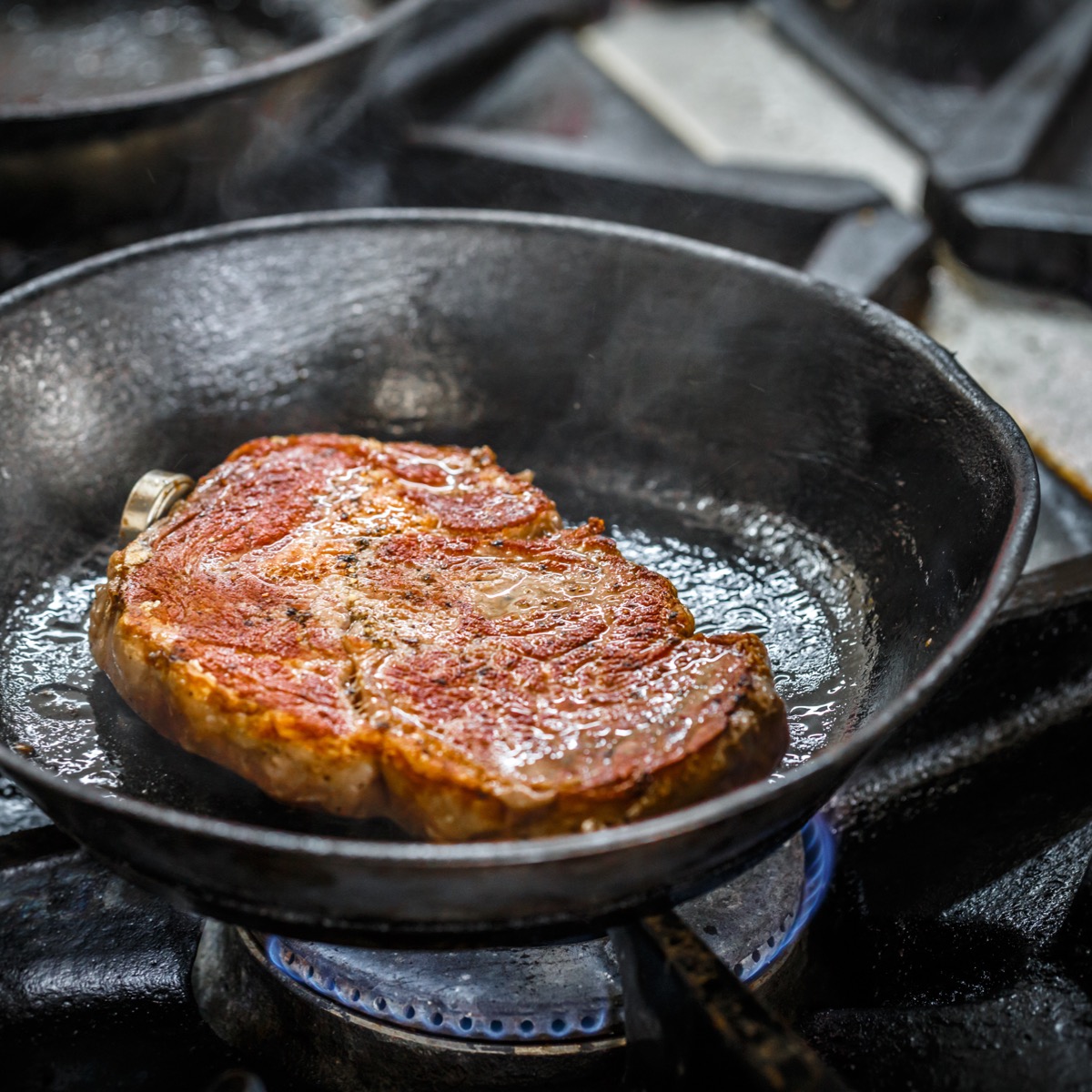
Why So Many Professional Chefs Use This Technique Daily
Here’s what you will need:
- one heavy pan that will retain heat and is oven-safe (cast iron is ideal for this)
- a lean cut of meat at cool room temperature
- butter or oil or some combination of the two
- kitchen tongs and oven mitts
- salt and pepper
My Pan Roasting Technique
Preheat your oven to 350 degrees F.
Preheat the pan over medium-high to high heat. Make sure the pan is good and hot. The trick is to have it hold its heat as much as possible once you put the meat in. That’s why cast iron is ideal—even though it is not as conductive as some metals, it stays hot for a very long time once it heats up.
Once the pan is hot, add a tablespoon or two of canola oil (or other neutral oil with a high smoke point) to coat the bottom.
IMPORTANT: How hot do you heat the pan before adding the oil?
I received a comment from a home cook who heated a cast iron pan until it was so hot the oil flamed up as soon as she added it to the pan, creating a terrifying situation.
Luckily, she had a fire extinguisher and could put out the flame. I have had this happen to me a couple of times, and I put out the flames by putting the pan cover over the pan and extinguishing it. You must be very careful when adding any ingredient to a hot pan.
How Much Heat?
I wrote an article called How Much Heat To Use When Sauteing or Pan Frying, describing how I determine when the pan is hot enough. Please check it out. I also want to share with you a warning I have in that article:
WARNING: Hot oil is very dangerous and can burn you. Most home cooks rarely get their pans and the fats they cook with to the proper temperature so if you do start heating your pans and fats to optimum levels, be very careful not to burn yourself. You may even want to start at slightly lower levels than discussed here until you are comfortable before taking them a little higher.
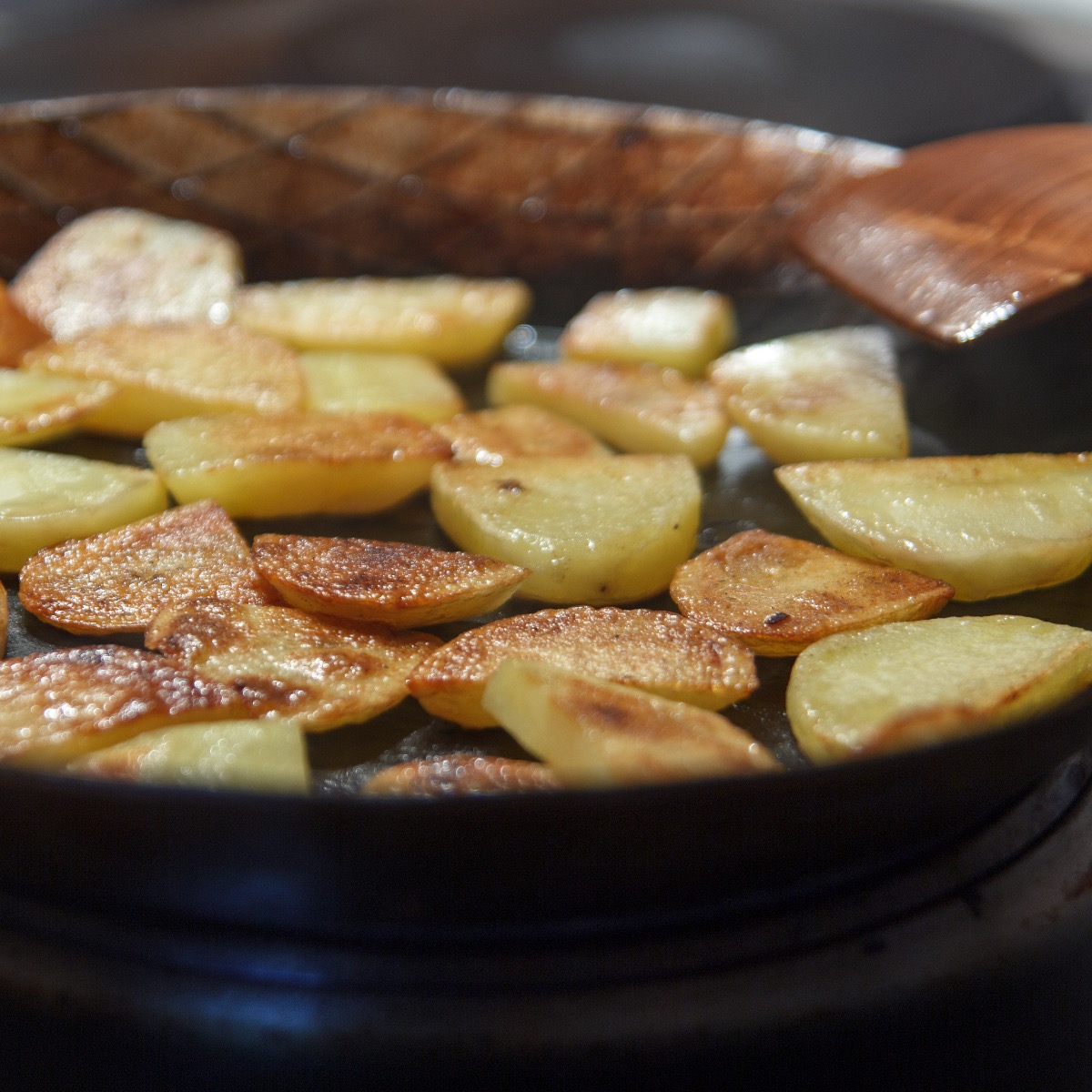
The Process of Pan Roasting
Please wait a minute or two for the oil to get good and hot; season your meat with salt and pepper, and place it in the pan. Make sure there is a lot of pan real estate around the meat. You don’t want to crowd the meat and risk steaming rather than searing.
How you proceed from here is up to you. I’ve seen people sear one side and then finish the whole thing in the oven. I’ve also seen chefs sear all sides of the meat and then finish in the oven. Since we’re looking for a fantastic crust and a moist, juicy interior, I say go ahead and sear all sides on the stovetop.
Once you are happy with your sear, place the meat in the oven to let it finish cooking. Use an instant-read thermometer to check the internal temperature of the meat and remove it from the oven about five degrees cooler than the target temperature. Cover and let the meat rest. Carryover cooking will finish the process.
I cannot give you a specific temperature for doneness—this depends entirely upon the cut of meat you choose: fish steaks, beef tenderloin, chicken, or pork; check your recipe for doneness temperatures. However, I did post a simple Meat Doneness Chart to help you decide on internal temperatures.
From start to finish, pan roasting should take anywhere from ten to twenty minutes, depending upon the thickness of the meat you are cooking. One of the great bonuses of pan roasting is taking the few minutes that the meat is resting to make a quick pan sauce with the drippings (fond in the pan.
Deglaze with the liquid/s of your choice, reduce, check for seasonings and finish the sauce with a pat of butter or maybe a splash of cream. Elegant enough for a dinner party but attainable on a busy weeknight.

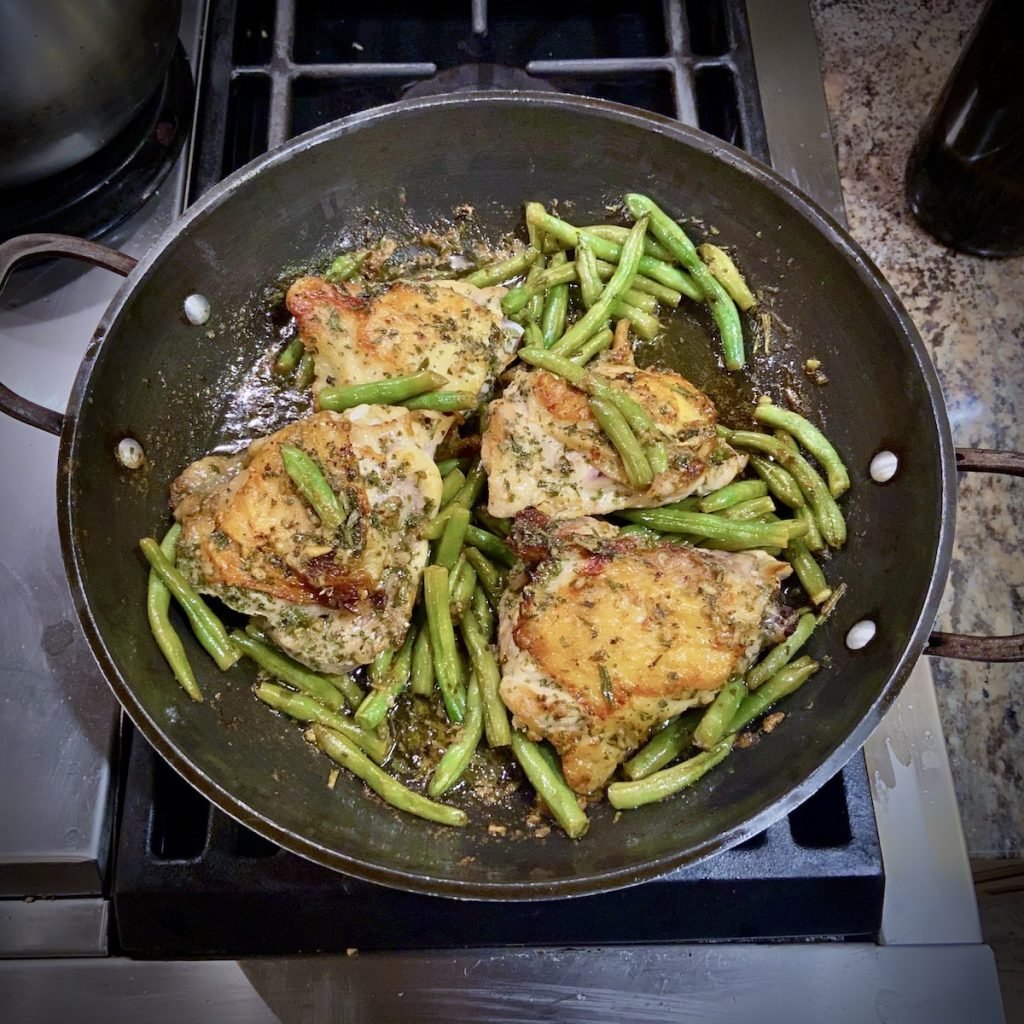
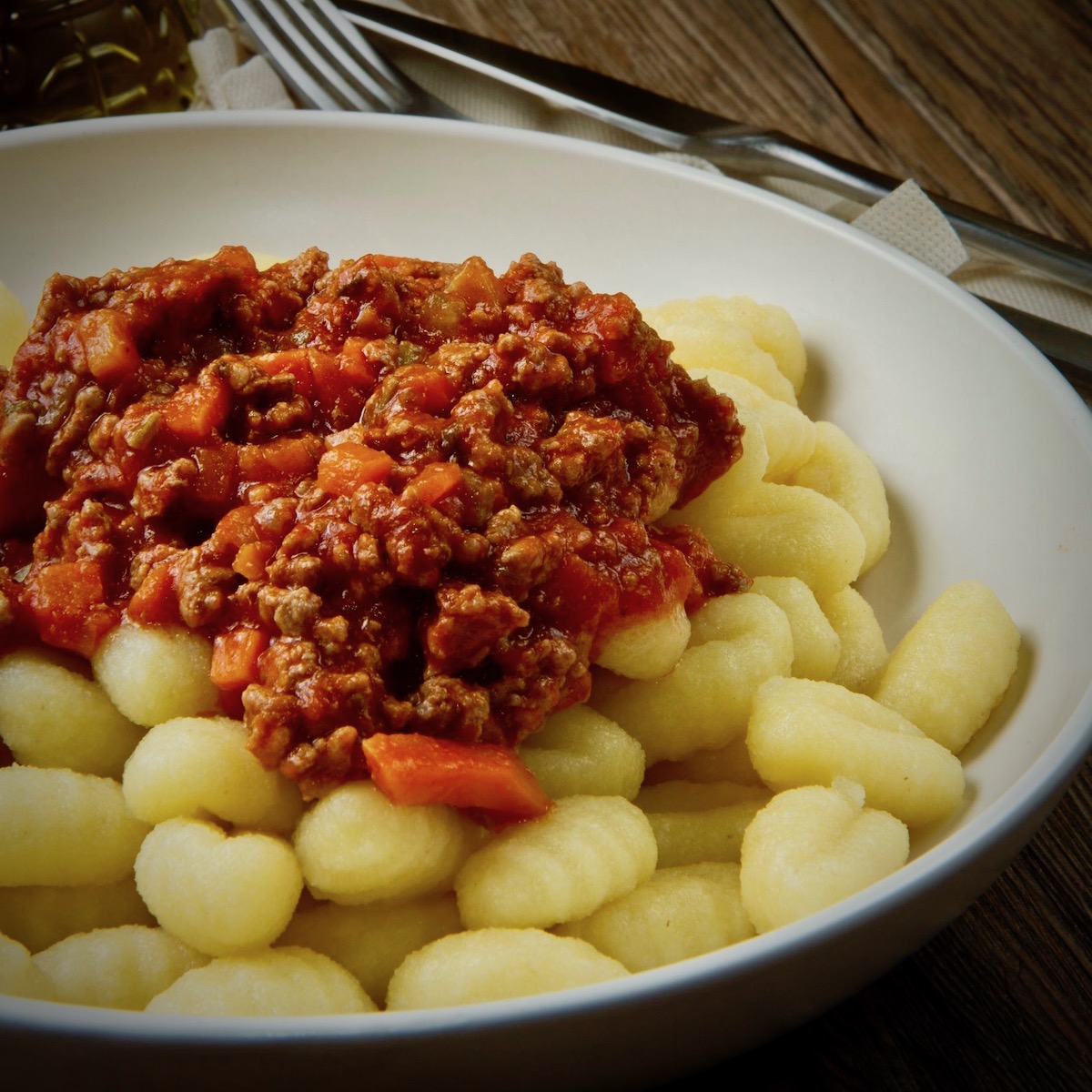
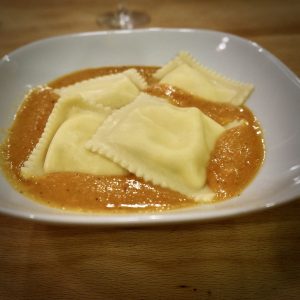




8 Responses
Thanks for the tips! 🙂 Wondering – where’s the video you reference? Cheers!
FB
Seems to have been lost in the update but it should be there now. Thanks for letting me know. — RG
Any comments on finishing not in the oven, but right on the stove top? Any benefits/drawbacks? Particularly for something like chicken breasts. I suppose it may dry the outside more, but makes also makes for easier basting (just add butter, etc, and spoon over the meat).
Hi Ben, sure you can finish in the pan but then I wouldn’t call it pan roasting but pan frying. Saying that, I have read in one cookbook that pan frying is done completely on the stove-top and not in the oven so there is a difference in what people call it. This is why I find cookbooks sometimes confusing but in the end you can call it what you like as long as you understand the different techniques. – RG
can you put the link to video back on site?
Hi Marguerite, the video is back. Thanks for bringing this to my attention. – RG
Hi! Your recipe says – 350 degrees F, chef Ming says – 450. Which is it?
I personally like 350 degrees F because I can control the heat more. It may take a little longer but I would rather take the extra time than worry about it overcooking especially if I’m not paying as close attention as I should. I suggest you try 350, 400 and 450 on different occasions and decide what temp works best for you.
thank you for posting this information and for the video. I am teaching myself !
Hi – this is one of my favorite techniques! I use a heavy cast iron pan for my filets – the trick to it for me is to put the cold pan in the cold oven and turn the heat to 400 degrees. The pan gets good and hot, (don’t forget your oven mitts!!!!), and i then transfer to stove top on high heat to keep it hot until i throw in the steaks on med-high. I sear the first side for a few minutes, then flip and sear for another few minutes, then place the entire pan back into the oven. We like medium-rare, so depending on thickness, i cook for 3-5 minutes on this side, then flip and do other side for 3-5 minutes. Let them rest in the pan, outside of the oven for a few minutes before serving. Perfect! And by the way, i usually marinate my steaks in the fridge for at least 30 minutes (several hours is ideal) in a bag with a bit of olive oil, S&P, worchestershire sauce, and any other seasonings of choice (herbes de provence is good; also, “Forward” seasoning from Penzeys!) I let them come to room temp for another 20-30 min.
Love your helpful hints and recipes and FB page!!
Best,
Tari
Tari, thanks so much for sharing your preferred method of getting your cast iron pans ready for filets. Great tips.